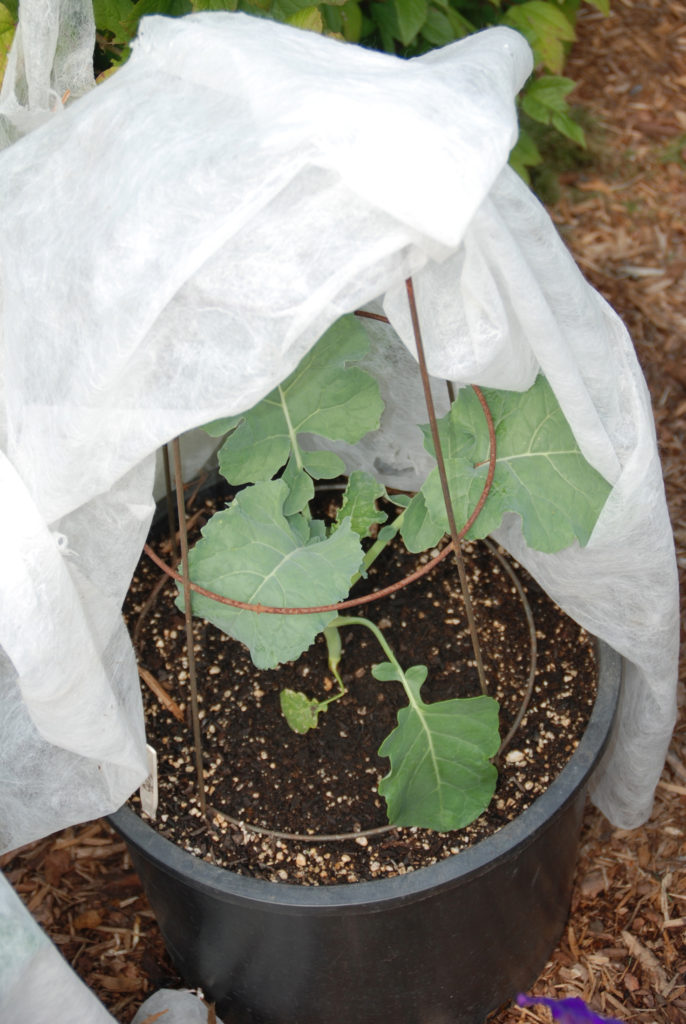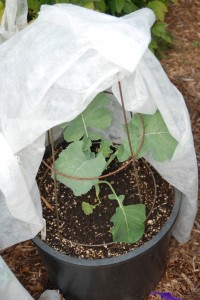Eco-Friendly Pest Control in the Garden

Floating row covers allow air, light and water through, but prevent insects like bean beetles and cabbage worms from reaching and damaging the plants.

By Melinda Myers
Spots on tomatoes, holes in hosta leaves and wilting stems mean insects and diseases have moved into the garden. Don’t let these intruders reduce the beauty and productivity of your landscape. One handy way to stop these intruders attacking your landscape could be to keep pesticides and tools to dispose of them nearby. Having external space to keep those tools and pesticides can make it a lot easier to dispense of them quickly. If you don’t have one already make sure you have a storage shed columbia sc or something similar so you can keep your tools well maintained and work on your beautiful landscape efficiently. Work in concert with nature to prevent and control these pests and you will be rewarded with a bountiful harvest and landscape filled with beautiful blooms.
Monitor. Take regular walks through the landscape. Not only is it good exercise, but it will improve your mood and you’ll discover problems earlier when they are easier to control. Look for discolored leaves, spots, holes and wilting. Inspect the underside of the leaves and along the stems to uncover the cause of the problem.
Identify. Once you discover a problem, identify the culprit. Your local extension service, garden center or reliable internet resource can help. Once identified, you can plan the best way to manage the culprit.
Invite the Good Guys. Toads, lady beetles and birds help control many garden pests. Attract them to the garden by planting herbs and flowers to attract beneficial insects, adding a house for the toads, and birdbath for songbirds. Avoid using pesticides and learn to tolerate a bit of damage. A few aphids or caterpillars will bring in the ladybeetles, lacewings, birds, and toads that are looking for a meal.
Clean up. Many insects and diseases can be managed and prevented with a bit of garden cleanup. A strong blast of water from the Garden hose will dislodge aphids and mites, reducing their damage to a tolerable level. Or knock leaf-eating beetles and other larger insects off the plants and into a can of soapy water. Birds in the garden can help get rid of pests like cockroaches, which can be beneficial when it comes to keeping pests under control. But there can be times where there are too many birds in the garden and they become an issue. It is best to get this under control if this is becoming an issue. Whether you are from London (UK), Paris or New York, there will be a pest control company out there willing to give you a helping hand.
Pick off discolored leaves, prune off diseased stems and destroy. Be sure to disinfect tools with 70% alcohol or one part bleach to nine parts water solution between cuts. This will reduce the risk of spreading the disease when pruning infected plants.
Adjust care. Reduce the spread and risk of further problems by adjusting your maintenance strategies. Avoid overhead and nighttime watering that can increase the risk of disease. Use an organic nitrogen fertilizer like Milorganite (milorganite.com) which encourages slow steady growth that is less susceptible to insect and disease attacks.
Mulch the soil with shredded leaves, evergreen needles or woodchips. This will keep roots cool and moist during drought, improve the soil as they decompose, and also prevent soil borne diseases from splashing onto and infecting the plants.
Non-chemical Controls. If the problems continue, try some non-chemical options for insects. A yellow bowl filled with soapy water can attract aphids, a shallow can filled with beer and sunk in the ground will manage slugs, and crumpled paper under a flower pot for earwigs are just a few ways to trap and kill these pests.
Or cover the plants with floating row covers. These fabrics allow air, light and water through, but prevent insects like bean beetles and cabbage worms from reaching and damaging the plants.
Organic products. Organic products like insecticidal soap, Neem, horticulture oil and Bacillus thuringiensis can be used to control specific pests. And even though these are organic, they are designed to kill insects or disease organisms, so be sure to read and follow label directions carefully.
Take Note. Make notes on the problems and solutions in this season?s garden. Refer to these next year to help you do a better job of monitoring and managing garden pests. And when shopping for new plants, select the right plant for the location and choose resistant varieties whenever possible.
A little eco-friendly gardening can go a long way in creating a beautiful and productive garden.
Gardening expert, TV/radio host, author & columnist Melinda Myers has more than 30 years of horticulture experience and has written over 20 gardening books, including Can?t Miss Small Space Gardening and the Midwest Gardener?s Handbook. She hosts The Great Courses ?How to Grow Anything: Food Gardening for Everyone? DVD set and the nationally syndicated Melinda?s Garden Moment TV and radio segments. Myers is also a columnist and contributing editor for Birds & Blooms magazine. Myers? web site, www.melindamyers.com, features gardening videos, podcasts, photo galleries and monthly tips.








